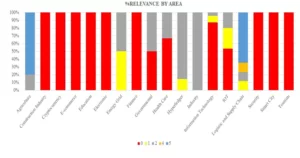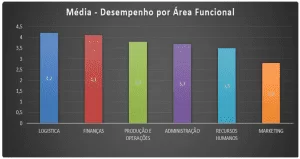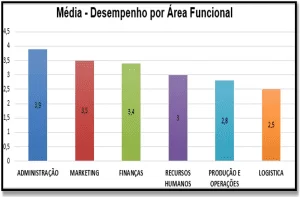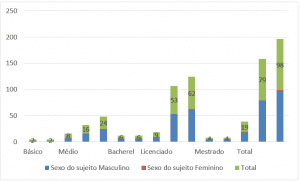SILVA, Paloma Barboza da [1]
FIGUEIREDO, Rúbia Medeiros [2]
SILVA, Paloma Barboza da; FIGUEIREDO, Rúbia Medeiros. Social benefits: Effective influence in companies – Multidisciplinary Core scientific journal of knowledge. Year 1. Vol. 9. pp 695-708 October/November 2016. ISSN. 2448-0959
Summary:
The social benefits when they are deployed to a planned and strategic help companies maintain a number of positive effects, as well as the importance of working conditions and the reflections of the social benefits in this regard, the growing concern of businessmen in offer the best to its employees; the importance of human talent in management and use of these resources, the positive reflections on the retention and attraction of talents together to competitors, the influences of the benefits from the results of the organizations and on the quality of life of employees.
Keywords: Social Benefits; Human talent; Quality of life.
1. Introduction
The purpose of this article is to establish by means of exploratory research aspects that surround corporate social benefits in enterprises and the positive reflections next to its human capital.
Many companies have already realized the importance of implementing a package of attractive benefits as strategically next to competitors, many main objective benefits the retention, motivation and quality of life.
What are the positive reflections of effective management of social benefits in a company?
Many organizations invest in social benefits which aim to offer advantages and facilities for their employees in order to create strategies that assist the organizational climate, but the benefits to the company beyond the initial objectives; These actions reflect directly and indirectly in a number of situations experienced in organizations such as the turnover (turnover).
The turnover which causes the frequency with which the developers move in and out of a company, influencing significantly in negative results of the Organization, so many of them have the desire to develop an effective process for the purpose of reducing the maximum alternating employees and benefits efficient management is seen as positive for best results.
The term turnover of human resources is used to set the fluctuation of personnel between an organization and its environment; in other words, the exchange of people between the Organization and the environment is defined by the volume of people joining and leaving the organization. (CHIAVENATO, 1998, p. 176).
For many years companies had as a form of benefits only the Valley Transportation and food stamps, but over time the same began to invest in this tool according to their culture and values.
The availability of the benefit solves partially issues related to organizational climate that is connected directly to the Association of values, attitudes and behavior patterns that exist within the company, i.e. the environment entered the optics of the collaborator, reflecting directly on reducing costs, reduced absenteeism and turnover, however it is necessary to check the importance and acceptance of it along to their employees.
A strategic human resources department is relevant to the implementation of items valued by employees, seeking an edge in the market and in order to provide a systemic form of the positive reflection of effective benefits management.
Chiavenato reports that change and modernization begins by the people in them.
If we want to modernize our businesses, we must start with the people who work in them. The modernisation going on before the people's minds and their competence to arrive later to the machinery, equipment, methods, processes, products and services. These are the consequence of modernization. The final product of it. But not its origin. The impetus of modernization is in people, in their skills and knowledge in its creativity and innovation, in their intelligence and competence (Chiavenato, 1994, p. 124).
The objective of this work is to present the importance of the effective management of social benefits and the positive reflections by the intellectual capital in organizations.
The article stems from a bibliographical research based on theoretical assumptions of various authors, exploratory research, by means of documentary information, books, websites and scientific articles.
2. The origin of Social Benefits
The benefits offered by the organizations was only the required character set by unions (collective agreements), requirement of labor and social security legislation, or the objective of tax deduction.
For GIL, (2009) from the second World War (the 40), the personnel administration was more concerned with the working conditions and the benefits made available to its employees, confirming the importance of the enhancement of human capital in organizations.
With the growth of the market entrepreneurs managed to show the importance and the reflections of the benefits by the competitiveness and the well-being of their employees, generating high levels of motivation, talent retention, reduced absenteeism, satisfaction and loyalty (loyalty) of employees.
Many social benefits have emerged as a form of recovery of subordinates to achieve its goals, i.e., aimed at the return of goal achieved (reward). The leaders created a few sporadic benefits as a form of bonus, that this currently.
The social benefits are the amenities, conveniences, the benefits and social services that companies offer to their employees in order to save their efforts and concerns. Constitute the so-called indirect remuneration granted to any employee regardless of position held in conjunction with the so-called direct remuneration, which is the salary for the position held (CHIAVENATO, 2006, p. 194).
2.1. Concepts of Social Benefits
The social benefits have recent participation in the routine of the companies, their emergence happened along with the awareness of corporate social responsibility business and reducing costs.
The packages of benefits provided in the companies are seen with a complement of remuneration (wages), taking into account the objectives of the company and the employees, but its effects go beyond the workplace, many of them to contemplate the familiar environment of your employees, seen as a form of care and motivation.
Currently it is common for companies to offer an attractive package of benefits to its employees, it is considered a differentiator in the market.
The social benefits are a form of indirect remuneration, in order to make life easier for employees, serving with a differential in a decision on a possible hiring.
The benefit package is created by means of a climate research with primary focus on employee satisfaction and the facilitation of their lives, they may be partially and/or fully available by the company, there is a need to explore these benefits with employees so that from these assumptions arise the positive effects of its use.
The benefits are intended to satisfy the individual, economic and social objectives, as follows:
Individual benefit-Related to their individual purposes, motivational and incentive development within the organisation, contributing to your professional growth by the company;
Economic benefit-Related to the return or exchange of mutual interest, connected directly to the attraction and retention of people;
Social benefit-Related family purposes and linked to their quality of life inside and outside the company.
Benefits are certain perks and advantages provided by the organizations, the title of additional payment of wages, to all or part of its employees. Are usually a package of benefits and services that is an integral part of the staff remuneration. […] In addition to its monetary or financial aspect, serve to rid employees of a number of disorders (CHIAVENATO, 1999, p. 271).
2.1.1 types of Social Benefits
Legal benefits are those required by labor law, social security or by collective agreements between trade unions. Include in the legal benefits that are paid together with the monthly payroll and generating social costs arising as: 13th salary; Family Wage; Maternity Salary; Paid holidays; Paid Weekly Rest; Aid Disease; FGTS; 50% extra for Overtime; Allowance of 1/3 on vacation; Risk premium, etc.;
Spontaneous benefits are those granted naturally and without legal requirements. Are generally determined by the company in the form of advantage or amenities for employees, these benefits are intended to provide to the employee and their family members a certain security in unforeseen or emergency cases. Can be linked to a series of situations such as: leisure, entertainment, recreation or even personal and professional investment as: Gratuity; Meals; Transportation; Loans; Medical and dental assistance; Basket; Pharmacy Assistance; Scholarships; Club or Guild; Flexible Schedule.
3. The influence of the benefits from the results of the Organization
Each company has its benefits package, be it a structured company with many features and greater ease of negotiation and implementation, or small and medium-sized companies because their cash flow be less opt for the most popular benefits.
A very important point for the types of benefits is know to identify the advantages of each, providing membership and the use of correct form, this is the most advantageous way to obtain the return invested, whether what was offered is serving its employees benefits.
Milkovich and Boudreau (2000) state that benefits are indirect aspects of total remuneration of employees.
To be considered an indirect remuneration, there is a need for a deployment in favour of everyone, whether in large or small businesses.
For organization: Raises the morale of the employees; Reduces turnover and absenteeism; Raises employee loyalty to the Organization; Increases employee well-being; Facilitates the recruitment and retention of personnel; Increases productivity; Demonstrates the guidelines and the purposes of the Organization to employees; Promotes public relations with the community; Promotes the Business Marketing in the market competition.
For Developer: offers assistance available on personal problems solution; Increases job satisfaction; Contributes to the personal development and well-being. Offers additional opportunities to ensure a social status; Offers extra compensation; Improves employee relations with the Organization; Reduces the dissatisfaction.
3.1. The reflections of the benefits in attracting and retaining talent
Organizations have as key people, they are responsible for the emergence and existence of the company in the market. In view of these changes in the world of work and the challenges that are posed to organizations, the human resources department plays a key role in defining and implementing strategic actions of attracting and retaining talent. Demographic changes and the rise of knowledge as a strategic asset reinforce the idea that talent management should be placed in the "heart of the strategy" (GUTHRIDGE et al., 2008).
The way people play their roles in organizations are linked directly and entirely the form of talks given to them, is related to quality of life, wages, benefits and therefore the satisfaction of employees to perform their professional activities. The package of benefits and incentive programs are established with the goal of simplifying the lives of its employees, when this is accomplished effectively results in a mutual relationship, whose interests go hand in hand in the same direction.
Chiavenato relates the importance of ease and advantage of the benefits offered by the Organization, thus resulting the competitiveness to the market in search of human talents with the aim of contributing to the well-being of its employees.
Benefits are benefits and advantages provided by the organizations, the title of additional payment of wages to all or part of its employees. Are usually a package of benefits and services which is part of personal remuneration. The benefits and social services include a variety of amenities and advantages offered by the Organization, such as hospital medical assistance, etc. (…) In fact, the benefits beyond the monetary or financial aspect serve to rid employees of a number of disorders, (…). The social benefits are closely related as aspects of the Organization's social responsibility (Chiavenato 2004:314-315,).
In the old days, companies only offered to its employees the benefits required established in their labor agreements, was seen by business leaders as compulsory expenditure without purpose of attracting or retaining talent, even in the face of this scenario the benefits were already a difference in decision-making related to issue change of workplace or even competition to accept the best job opportunity over the years, this scenario was evolving.
Many organizations develop a series of climate research for better benefit package, in order to be an effective attraction next to the attraction and retention of talent.
The current market is increasingly competitive, this causes the ways of attracting and retaining talent to become differentials for the success of the Organization, when a company identifies a high-potential talent feels the need of investment for its powers to be prepared for new challenges.
The next step aimed at the permanence of this talent is the preparation of retention mechanism of the same as: career development, professional and personal development and a good working environment and competitive compensation and an attractive benefits program.
Who knows about the importance of the salary, but the package of benefits is also a differential in decision-making, since currently the companies benefit plans are similar.
Each times more businesses along with their human resources (HR) has been improving its strategies and remuneration Envisioning the differentiation by the competitors.
The human resources professionals use the process of retaining talent for motivation, productivity and commitment with the organizational objectives, retaining talent is a method that requires the development of human capital as its main focus by performing a join of the personal and professional goals.
Cleide Nakashima reports the importance of the relationship and transparency on both sides (developer and company), as below:
The retention or loyalty of employees towards the company is influenced through the attractions that the company offers and the reconciliation thereof with the purpose of each. Transparency in communication, participation in events, quality of life and potential are aspects that enrich this relationship and make up a set of achievements Nakashima (2003).
3.1.1 the reflection of Social Benefits in the quality of life of employees
There are several definitions for quality of life, but will be addressed only the reflection of social benefits in this regard.
The benefit package is associated with the quality of life, not only employees, but also the reflections along their families.
The quality of life is related to the care with human capital, this reflects directly on reducing occupational illnesses, a routine problem in business, take care of health is taking care of the most valuable in a company is the best investment to be carried out.
The benefits are designed to achieve the satisfaction of its employees, by providing them a due care, a perk, a recognition is even a differential, developing a direct reflection on the quality of life of employees, providing its staff various types of personal and professional satisfaction avoiding also the reduction of occupational diseases.
The quality of life satisfaction of employees, in order to generate a reasonable return to entrepreneurs with the profitability and performance of its human capital, provides a healthy environment enabling the development and contributing directly to the ability to interact with team activities, assertiveness, balance and even the psychic energy to the achievement of results and overcoming of goals, much-discussed subject in today's corporate world.
Currently the benefits programs are so important as to remuneration policy, according to FERNANDES (1996) happy employees are not always those who earn more, are generally those who enjoy what they do and have recognition for results achieved.
4 the importance of human talent in organizations
In recent decades the society experienced a period of transition where the Industrial age gave way to the era of knowledge and information. The human talent has become essential in organizations with the goal of interpreting the processes aiming to refine the techniques and develop new mechanisms related to technology.
Given this scenario of innovation, organizations began to get in the market "smart" employees in order to achieve the best business results vis-à-vis its competitors, saw that as much agility that the machines could offer in question standardization and perfection, they didn't have the perception and even ability to invent, think, and make changes.
Investment in human talent means get the best condition to develop the base that sustains the organizational pyramid, without it there is no competitive success in the marketplace, where increasingly offer credibility people involved in them.
The success of an organization is directly related to the sum of its employees, each with its characteristic, nothing is more valuable than human capital, because it is he who builds the organization.
Antunes (1999) reports that organizations need to rely on human resource of knowledge and not on human resource of manpower; the technology; as on the one hand fills this factor, on the other hand demand for human potential of intelligence.
The sum of the talent, creativity, motivation and commitment that the company reach its goals, thus organizations increasingly seek to retain and develop its staff in order to maximize your knowledge, perhaps the greatest difficulty encountered in the present day it is precisely this human capital retention, how to keep you motivated and not lose this intellectual capital for competitors.
4.1 the importance of HR in the administration of Social Benefits
The Human Resources Department is one of the key within an organization because it is no longer only seen with a Department that performs hiring and layoffs and went on to have their due importance beyond the bureaucracy that surrounds their daily and monthly processes.
HR is responsible for directly managing the human capital of a company is often the responsibility of administering and lead employees to professional development within the Organization, aimed at the achievement of goals.
The Human Resources as one of the activities within their routine administration of benefits, the Department is responsible from the study for deployment until the correct orientation of the benefits provided.
Many companies require a strategic human resources department, closer to the developers where you can assess whether the benefits are really being used correctly, and that it is meeting the expectations of its employees and their families.
The provision by itself does not appear as positive effect, it is necessary a fierce dedication to satisfaction in HR.
The lack of monitoring of benefits may reflect negatively on the business accounts, because improper use can put everything to lose when a renewal employment with suppliers.
A very well structured policy comes with the Mission of providing to significantly increase the motivation of employees, serving also as an important attraction in the market on talent retention.
Silva (2002), in turn, States that the management's primary interest is to motivate employees to achieve organizational objectives efficiently and effectively.
At this thought, note that the role of the Department of human resources is essential in this regard, and we need the ability to understand and overcome limits along with their respective teams, in addition to defining goals and objectives clear and concise and still making employees have motivation to achieve your goals.
5 final considerations
The social benefits offered by companies plays a key role in various aspects, be they related the advantages and facilities for its employees, reducing turnover costs, engagement, appreciation and loyalty of its human capital, strategic organizational climate, differential among the competitors and the quality of life.
Currently entrepreneurs see the positive reflections of effective management of social benefits along with its employees and its influence connected directly to the company's results from that assumption the managers began to collect an HR (Human Resources Department) more strategic, linked directly to quality of service, not only provide social benefits, more studying each one of them Verify the viability and reflection of these benefits with your human capital.
Thus one can see that the attraction and retention of talent is connected directly the handling given to them and the satisfaction of the same to the Organization, these are the decisive factors in keeping your "smart capital" contributing to the success of the established goals and objectives.
Another very important feature is that the benefits have a reflex connected directly the quality of life of employees, as of their families, that means an exchange of positive actions on both sides.
Therefore, it is understandable that effective management of social benefits have positive reflexes inside and outside the company, not only connected to financial return, but a series of positive factors linked to human capital.
Bibliographical References
ANTUNES, Maria Thereza Pomp. Contribution to the understanding and measurement of intellectual capital. 1999
CHIAVENATO, i. Managing People: the decisive step towards participatory administration. São Paulo: Makron Books, 1994.
CHIAVENATO, Neena. Human resources: Compact Edition. 5th Edition. São Paulo: Atlas, 1998
CHIAVENATO, i. people management: the new role of human resources in organizations. Rio de Janeiro: Campus, 1999.
CHIAVENATO, i. people management. Rio de Janeiro: Campus, 2004.
CHIAVENATO, i. introduction the general theory of administration. São Paulo, Elsevier, 2006.
Fernandes, E.C. quality of life at work: how to improve. Salvador, House of quality, 1996
GIL, Bc management, focus on professional roles. São Paulo: Atlas, 2009
GUTHRIDGE, m. KOMM, A.B. LAWSON, e. Making talent strategic priority. [artigo eletrônico]. In: McKinsey Quarterly. 2008 available at: <http: www.mckinseyquarterly.com/organization/making_talent_strategic_priority.="">accessed: 8/16/2016.</http:>
George t. MILKOVICH, BOUDREAU John w. human resource management. São Paulo: Atlas, 2000.
Nakashima, Natarajan. Deloitte Talent Bank: retaining talent, the biggest challenge. 2003
SILVA, Reinaldo Oliveira da. Theories of administration. São Paulo: Pioneer Thomson Learning, 2002.
[1] Graduated in business administration at Italian Brazilian University Center (UNIÍTALO)
[2] Master in communication by UMESP-Universidade Metodista de SÃO PAULO. Graduate program in Cinema by ULA-free University of the arts and media relations at SENAC. Has dual degree: journalism and advertising by UNIRP-Centro Universitário de Rio Preto. He is currently a professor in the graduate MBA from UNASP-Centro Universitário Adventista de SÃO PAULO, in grad school at SENAC and College teacher Carlos Drummond de Andrade in relationship marketing and retail, people management, business communication, communication and expression, copywriting, sustainability, scientific methodology, laboratory of creativity in advertising production and fashion design and orientation of academic projects














